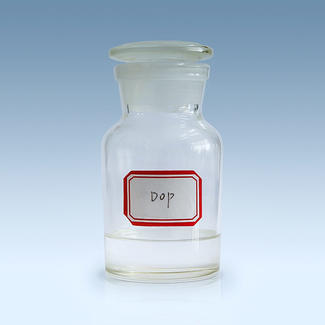Advantages Of DOP
DOP, also known as di(2-ethylhexyl) phthalate, is a type of plasticizer that has been widely used in various industrial applications. Here are some advantages of DOP:
Cost-Effective: DOP is a cost-effective plasticizer compared to other types of plasticizers, which makes it a popular choice for many manufacturers.
High Plasticizing Efficiency: DOP has a high plasticizing efficiency, meaning that it can significantly improve the flexibility and workability of the polymer at a relatively low concentration.
Excellent Compatibility: DOP has excellent compatibility with a wide range of polymers, including polyvinyl chloride (PVC), making it a versatile plasticizer for a variety of applications.
High Stability: DOP is highly stable over a wide range of temperatures and does not degrade easily, making it a reliable plasticizer for long-term use.
Low Volatility: DOP has a low volatility, which ensures that the plastic remains flexible and workable over a long period.
Good Electrical Properties: DOP has good electrical properties, which make it suitable for use in applications that require good electrical insulation, such as wires and cables.
Good Weatherability: DOP has good weatherability and can withstand exposure to sunlight, heat, and other weathering conditions without losing its plasticizing effect.
Overall, the advantages of DOP make it a popular and reliable plasticizer for a wide range of industrial applications. However, it is important to note that DOP has been associated with some health and environmental concerns, which has led to the development of alternative plasticizers.
DOP Trend
The trend regarding the use of
DOP as a plasticizer has been changing over the years due to concerns related to its potential health and environmental risks. Some countries have banned or restricted the use of DOP in certain applications, while others have implemented allowances to DOP in consumer products. Here are some of the recent trends related to the use of DOP:
Replacement with Alternative Plasticizers: The health and environmental concerns associated with DOP have led to an increasing trend of replacing it with alternative plasticizers. Alternative plasticizers, such as citrates, adipates, and trimellitates OP, are being used in applications allstrewed
Restriction and Ban: In some countries, such as the European Union, the use of DOP in certain applications, such as children's toys and food packaging, has been banned or restricted.
Regulation: Some countries have implemented regulations to limit the amount of DOP in consumer products. For example, in the United States, the Consumer Product Safety Improvement Act (CPSIA) limits the use of certain phthalates, including DOP, in children's products.
Research and Development: With the growing concern over the health and environmental risks associated with DOP, there has been an increasing trend towards research and development of alternative plasticizers that are safer and more environmentally friendly.
Overall, the trend regarding the use of DOP as a plasticizer has been shifting towards alternative plasticizers that are safer and more environmentally friendly. This trend is likely to continue as the health and environmental concerns associated with DOP continue to gain attention.
DOP Industry Standard
DOP (Di(2-ethylhexyl) phthalate) is a commonly used plasticizer in the plastic industry. Its specifications and standards are often set by industry organizations or regulatory bodies, such as the American Society for Testing and Materials (ASTM) or the European Chemicals Agency (ECHA). Here are some of the industry standards for DOP:
ASTM D2383 - Standard Test Method for Viscosity of Epoxy Resins and Related Components: This standard describes a test method to determine the viscosity of DOP and other plasticizers.
ASTM D1045 - Standard Test Methods for Sampling and Testing Plasticizers Used in Plastics: This standard covers the sampling and testing of DOP and other plasticizers to ensure their quality and consistency.
ECHA REACH Annex XVII - Restrictions on the Manufacture, Placing on the Market and Use of Certain Dangerous Substances, Mixtures and Articles: The European Chemicals Agency (ECHA) has restricted the use of DOP in certain applications, including toys and childcare articles.
US FDA Food Contact Notification (FCN): The US Food and Drug Administration (FDA) has established regulations and guidelines for the use of DOP in food contact materials.
ISO 1628-5 - Plastics - Determination of the Viscosity of Polymers in Dilute Solution Using Capillary Viscometers - Part 5: Di(2-ethylhexyl) phthalate (DEHP) Plasticizers: This standard specifies the method for determining the viscosity of DOP using a capillary viscometer .
These industry standards help ensure the quality and safety of
DOP in various applications. Manufacturers, suppliers, and users of DOP are encouraged to comply with these standards and regulations to ensure the safe and consistent use of this plasticizer.



 English
English 中文简体
中文简体



